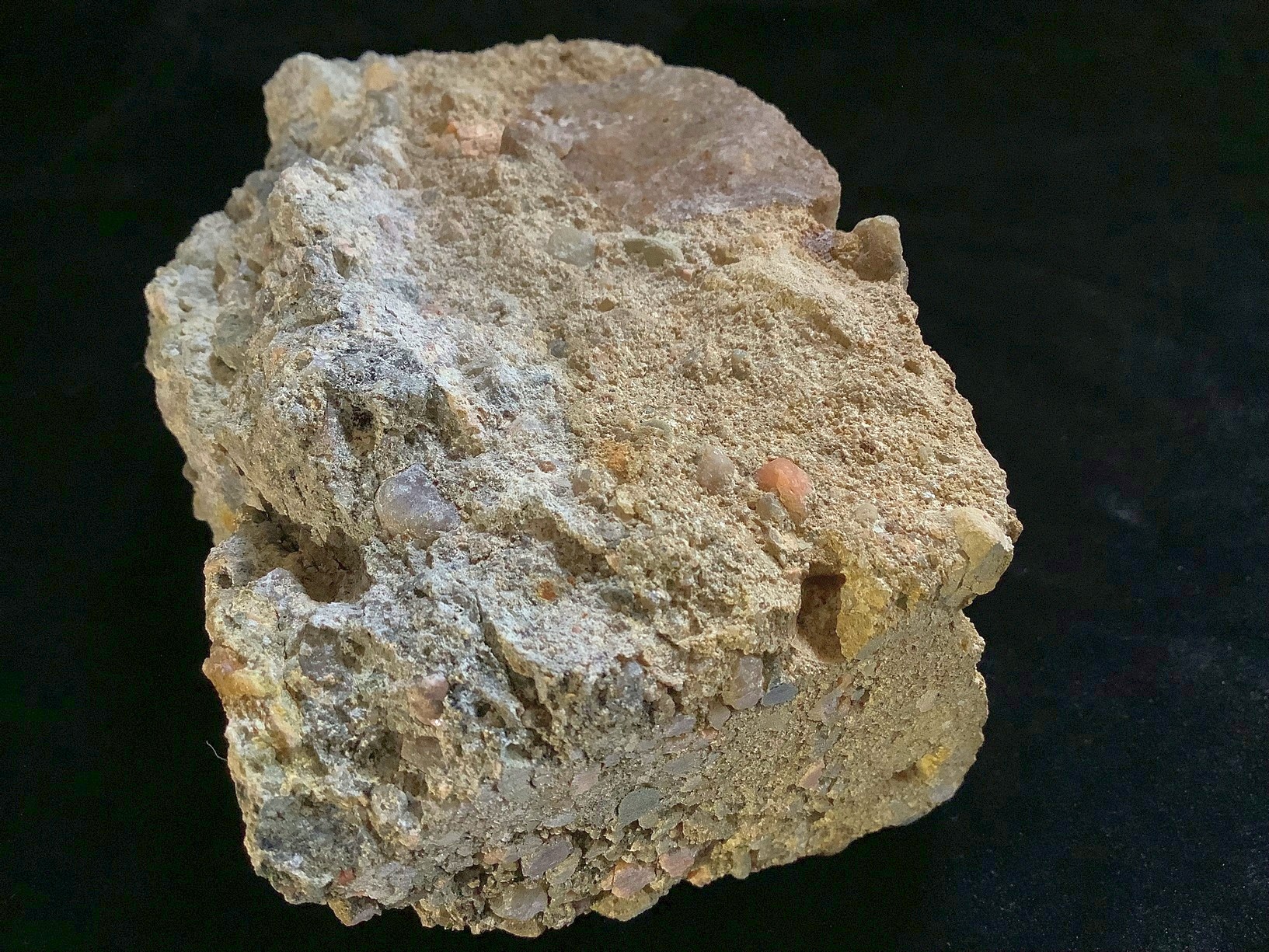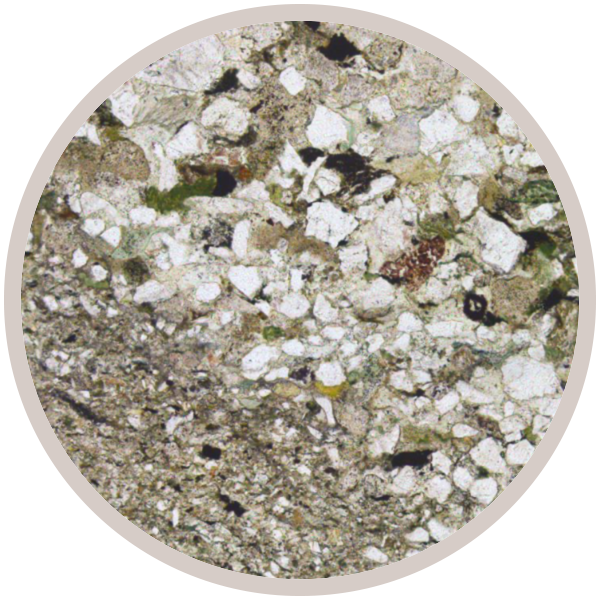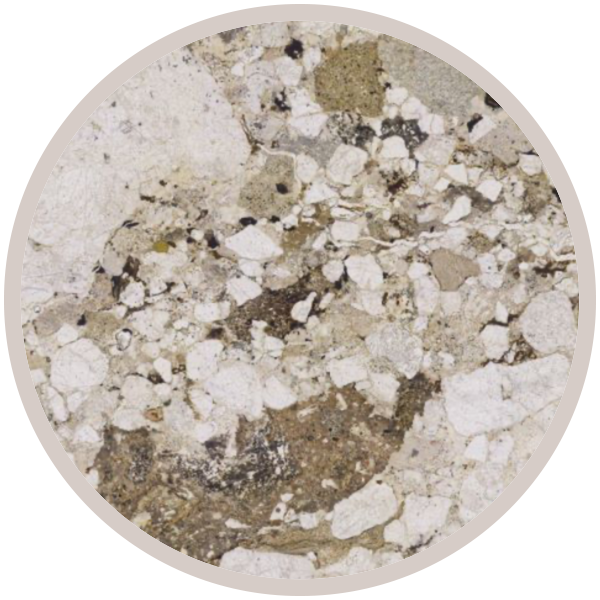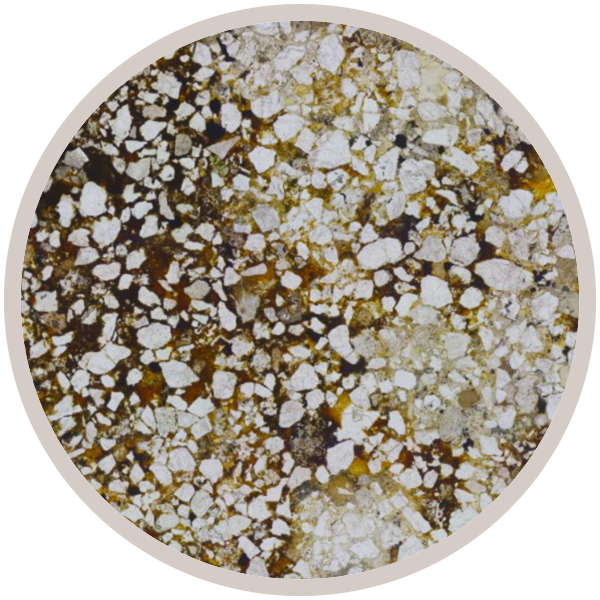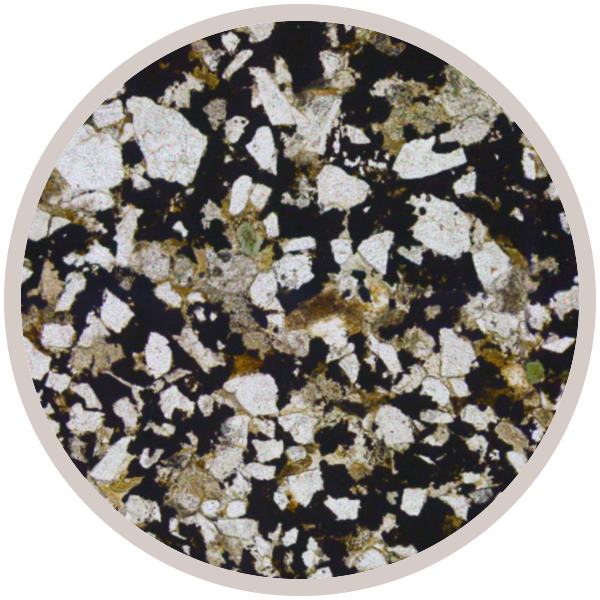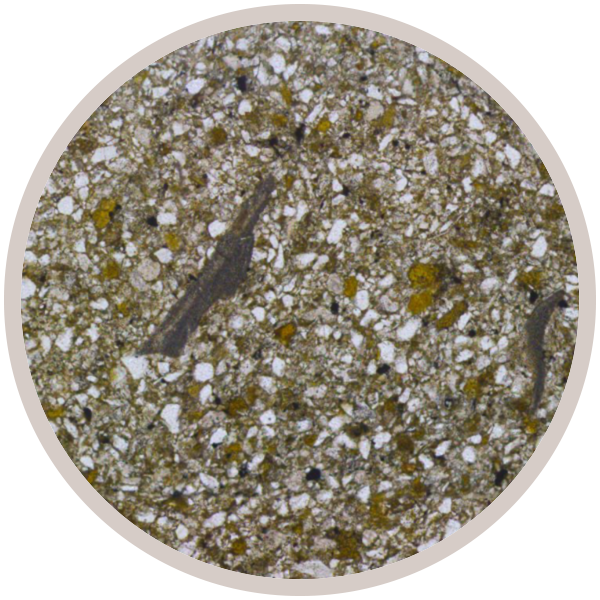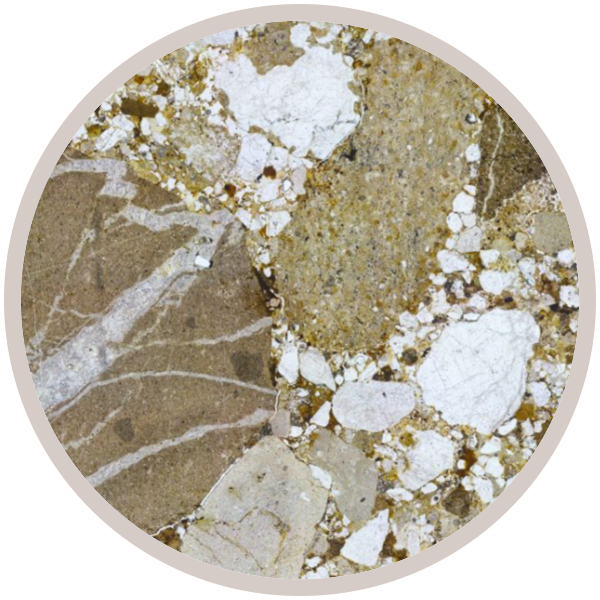
Fact sheet
A polymict conglomerate of Carboniferous age, collected in Brewin's Cutting from immediately above the unconformity with underlying Silurian strata including samples SW2 and SW11. This sedimentary rock is of Carboniferous age, around 420-417 million years old.
The conglomerate was deposited directly on top of the weathered surface of the eroded Silurian sandstones and siltstones below, in a low-lying, deltaic environment when the region lay near the equator. The pebbly nature of this rock tells us it represents one of the river channels. These deltas were thickly forested with trees - in fact, flattened fossil tree trunks have been found in these strata.
The irregular surface between the top of the Silurian strata and the base of the Carboniferous conglomerate is an example of an angular unconformity: a time gap in the sedimentary column where strata are missing. In this case, the time gap amounts to around 100 million years. These gaps generally mark episodes of uplift and mountain building.
In thin section, the coarse-grained, fragmental texture is very clear. Clast shapes vary from rounded to subangular, and the rock is poorly sorted, with a wide range of grain sizes. Although many clasts are of quartz or feldspar, several are polycrystalline and represent grains or pebbles of other rock-types, including sandstone, granite and quartzite. One large grain is of a fine-grained rock cut across with quartz veins, now recrystallised. Several other grains are darker brown or olive-green in colour, indicating altered mafic rock-types; there are also some pale green grains of chlorite. In between the grains there is yellow to brown, fine-grained material that probably represents a mixture of insoluble iron oxides and clay minerals. However, there are also numerous colourless, isotropic patches - these are empty pore spaces.
This sample was collected as part of the 'Macro to Micro' project.
This Collection showcases the geodiversity of a classic geological site: the Saltwells National Nature Reserve in the West Midlands.
As well as displaying thin section and hand specimen views along with information setting them in the context of their landscapes, we also include perspectives and creative responses to the geological heritage of the sites from the local community.
| Explore the stories of the rock layers at Saltwells and Wren's Nest NNRs, designed by students at King Edward VI School, Stourbridge: |
This Collection was made possible by funding awarded to the 'Macro to Micro' project by the Natural Environment Research Council (NERC) under their 'Growing Roots' scheme.
